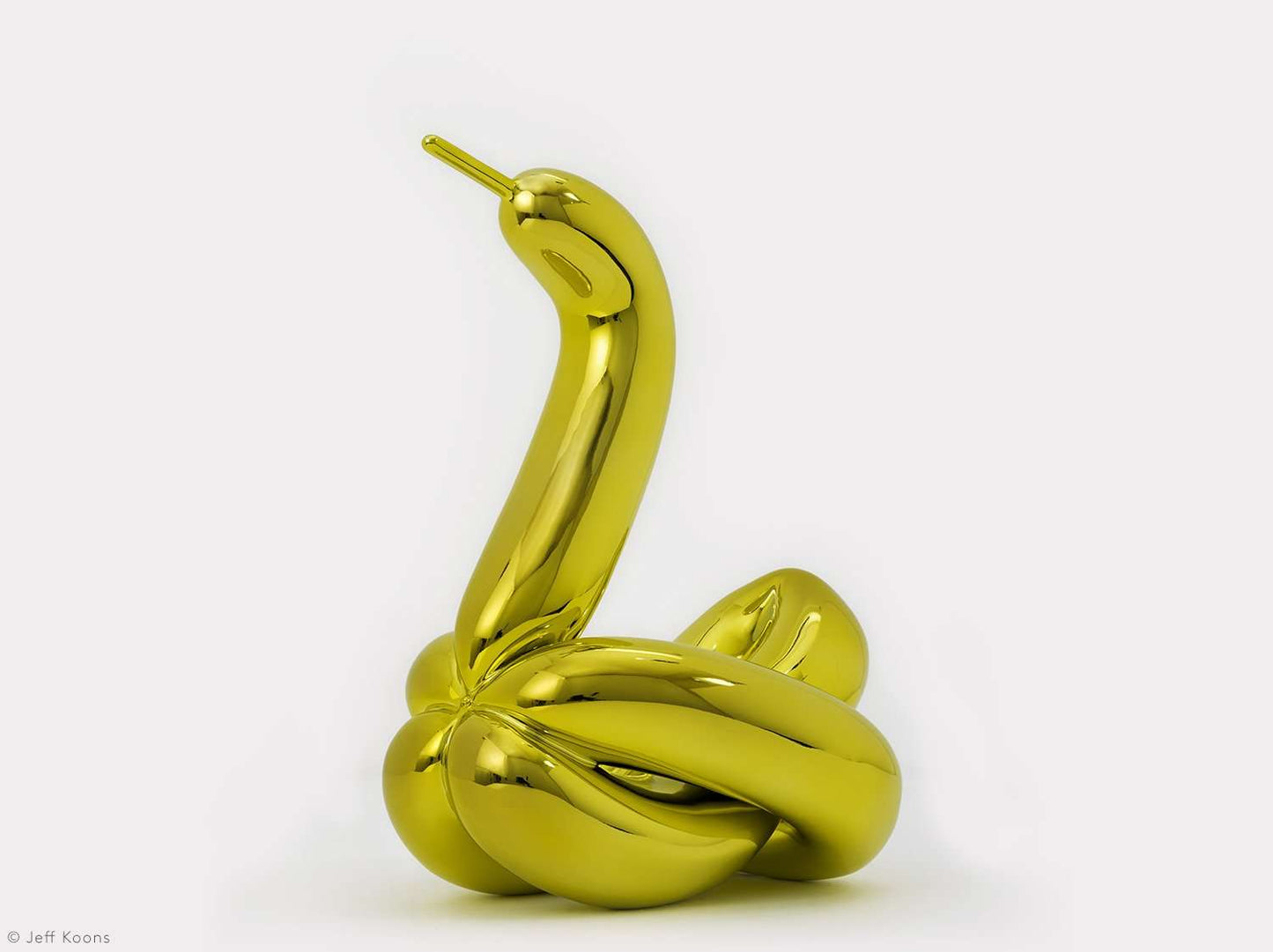
Jeff Koons
Jeffrey Koons, aka Jeff Koons, was born on January 21, 1955 in Pennsylvania. His parents, passionate about art, encouraged him towards an artistic career which led to his enrollment at the prestigious Chicago Art Institute, under the guidance of Ed Pasche, a renowned teacher and artist. After graduating from the Art School of Baltimore, he arrived in New York where he was absorbed by the avant-garde and the climate of artistic revolution. and cultural. Fascinated by the works and personalities of Martin Kippenberger and Robert Smithson, he leaves the figurative to dedicate himself to abstract, conceptual and material painting. 1980 is the year of his consecration as an artist: The New, his installation exhibited in New York, drives the public and critics crazy. The sculpture, made from vacuum cleaners transformed into a work of art, recovers the idea of the Duchampian ready made, of Andy Warhol's factory and, in general, of the common object, even a fairly poor one, which becomes art. The new Andy Warhol crowns the world of New York art. In 1991 he met and married Ilona Staller, alias Ciciolina, one of the most famous and iconic porn divas, with whom he created and published a series of erotic-artistic shots. The idea is to bring and transform real life, with its often conflicting impulses, into art. The photos were exhibited at the Venice Biennale in 1990. Inspired and motivated, he then creates Puppy, the dog-shaped maxi-sculpture made up of 70,000 flowers. The work, 13 meters high, is a kaleidoscope of colors and scents that praise positive things: love, joy, loyalty and happiness. The dog is progressively joined by the rabbit, the swan and the monkey. A zoo, expressed and worked in the most disparate materials: paint, plastic, balloons, marble, iron, steel and porcelain. The series of sculptures, called Celebration Sculptures, are an evocation of childhood, children's birthday parties and, in general, the beauty of life. On a conceptual level, they represent the desire to create a democratic art, understandable to all and capable of engaging due to its immediacy and simplicity. Obviously, alongside celebratory art, there coexists a subtle criticism of consumerism, of Western society obsessed with possession and money. The same company that made him a rich man with collectors willing to spend millions on one of his works. Social criticism and joy coexist and, in the end, find a meeting point in an art that is a mirror, interpreter and daughter of our time. And to whom, like a lively and slightly mischievous son, one forgives in the knowledge that no one is better than him. It goes without saying that Jeff Koons is one of the most famous, collected and loved living artists.


